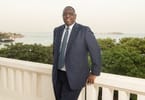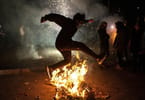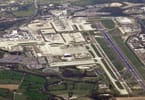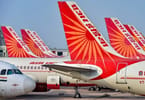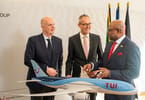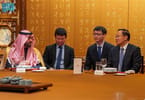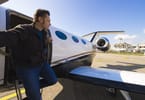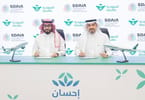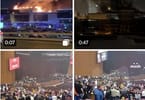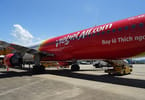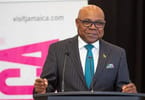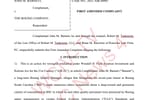SINGAPORE – Prime Minister of the federated State of Singapore since 1959, Lee Kwan Yew was a visionary personality who managed to turn the old British trading port into a major international center for trade, finance, services as well as a major transportation hub for Southeast Asia, particularly towards Malaysia, Indonesia and, in the eighties, to Australia and China PRC. Singapore today is a leading international meeting and exhibition destination. Singapore is ASEAN third busiest destination with some 15.5 million travelers a year, while Changi International Airport is the third busiest airport in Southeast Asia, with 54.1 million passengers last year – an absolute record in its history.
Even before the independence of the country, Lee saw tourism as a major industry and economic driving force for the city. In July 1963, Singapore Ministry of Finance provided funding and resources for tourism promotion. Singapore Tourist Promotion Board (STPB) was established on January 1st, 1964. The board coordinated activities of tourist enterprises, set up rules and standards for the industry and launched international marketing campaigns. The main source of funding was derived from a 3% tax levied on occupied bedrooms in hotels. First campaigns were launched to Japan, North America and Australia. In its year of independence, Singapore received 98,000 international travelers, flirting with the magic 100,000-visitor mark.
In 1970, this number reached 522,000 tourists. Singapore slogan then was “You see more of the Orient in Singapore’, a slogan which would last until the mid seventies when the board replaced it by “Surprising Singapore”. In 1970, Singapore had already four overseas office in London, San Francisco, Sydney and Tokyo. At the end of 1973, the city has passed the magic mark of a million international visitors. That year, tourist revenues exceeded S$528 million, becoming the fifth largest contributor to local GDP. The hotel industry accounted for over 10,500 rooms compared to just 3,500 a decade earlier. The seventies also saw the promotion of Singapore as a convention destination with the creation of the Singapore Convention Bureau in 1974. By 1979, annual arrivals topped two million visitors.
With Lee Kwan yew ambition of turning Singapore into Southeast Asia prime financial and trading hub, new infrastructure such as the airport, exhibition halls and a convention center were developed in the eighties and early nineties. This included the opening of the new Changi international airport in 1981. From the mid-80s to the mid-90s, the government launched the transformation and development of Raffles Place and Marina Bay –including the construction on reclaimed land of Suntec Convention and Exhibition Centre.
Between 1984 and 1986, Singapore worked out its first large scale Tourism Masterplan to reassess the city’s image and its positioning on the world stage. The Masterplan marked a shift for the City State towards the preservation of the city’s cultural and historical assets, the promotion of Singapore’s ethnic diversity and the development of new attractions. The eighties saw the rehabilitation of Chinatown, followed by Little India, Tanjong Pagar and Kampong Glam, the reconstruction of Bugis Street, Sentosa Island transformation into an attractive entertainment and resorts destination and the conversion of Boat Quay into a pedestrian precinct with trendy bars and restaurants. All was achieved thanks to an ambitious budget of a billion Singapore dollars.
In the 1990s, Singapore further refined its strategy positioning the city as a cultural hub for Southeast Asia and looking at developing further attractions. The government launched annual international festivals such as the much acclaimed Singapore Food Festival and the Singapore Arts Festival.
Lee Kwan Yew stepped down from his position as active Prime Minister in 1990. That year, Singapore reached for the first time the milestone of 5 million international tourists (precisely 5.32 million). It was not until 2007 that the City-State reached a new milestone of over 10 million international visitors. At that time, “Surprising Singapore” had been replaced by “New Asia-Singapore” and then by “Uniquely Singapore”. Since 2010, Singapore tagline is “YourSingapore”. More than ever, this slogan fits with Lee Kwan Yew strong vision for its city and for its tourism.
WHAT TO TAKE AWAY FROM THIS ARTICLE:
- Prime Minister of the federated State of Singapore since 1959, Lee Kwan Yew was a visionary personality who managed to turn the old British trading port into a major international center for trade, finance, services as well as a major transportation hub for Southeast Asia, particularly towards Malaysia, Indonesia and, in the eighties, to Australia and China PRC.
- The eighties saw the rehabilitation of Chinatown, followed by Little India, Tanjong Pagar and Kampong Glam, the reconstruction of Bugis Street, Sentosa Island transformation into an attractive entertainment and resorts destination and the conversion of Boat Quay into a pedestrian precinct with trendy bars and restaurants.
- The Masterplan marked a shift for the City State towards the preservation of the city’s cultural and historical assets, the promotion of Singapore's ethnic diversity and the development of new attractions.




